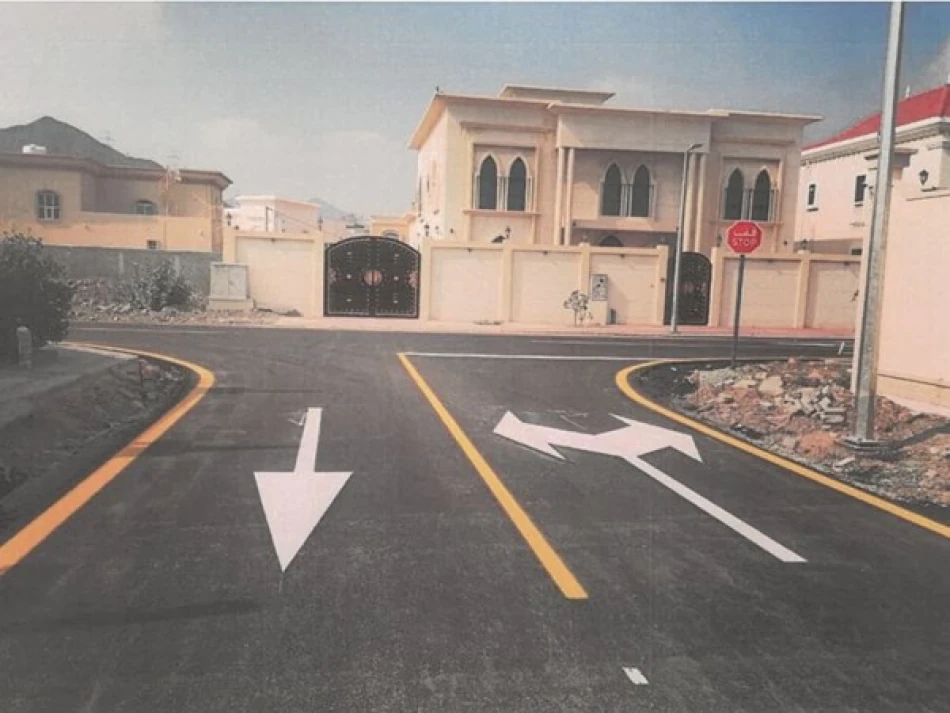
Fujaira Ruler Directs 9th Phase of Local Road Projects to Commence
Fujairah Launches Ambitious Phase Nine Road Network Expansion to Boost Economic Connectivity
The Emirate of Fujairah has commenced its ninth phase of internal road network development, spanning 31 kilometers across multiple cities and regions. This latest infrastructure push, directed by Sheikh Hamad bin Mohammed Al Sharqi, Supreme Council Member and Ruler of Fujairah, represents a strategic investment in connectivity that could significantly enhance the emirate's economic competitiveness and quality of life for residents.
Comprehensive Infrastructure Overhaul Targets 13 Key Areas
Salem Mohammed Ali Al Maksah, Director of the Public Works and Agriculture Department in Fujairah, announced that the project will develop internal roads across 13 strategic locations, including Dibba Al-Fujairah, Al-Khalibiya, Murbad, Qarat, Qadfa, Siji, Thoban, Wadi Al-Sidr, Habhab, Al-Qariya, Wadi Sahm, Al-Farfar, and Ouhala. The comprehensive approach demonstrates Fujairah's commitment to balanced regional development rather than concentrating solely on major urban centers.
The project extends beyond simple road construction, incorporating modern urban planning elements including street lighting, directional and traffic signage, speed bumps, side parking areas, and pedestrian crossings equipped with traffic lights along the Corniche, Sheikh Zayed, and Al-Ghorfa roads.
Engineering Challenges: Tunnels and Drainage Systems
Strategic Tunnel Construction
Two significant tunnel projects highlight the technical ambition of this phase. A 1.2-kilometer tunnel in the Al-Shariya area and a 1.4-kilometer tunnel near Sheikh Khalifa General Hospital will address traffic bottlenecks while maintaining the natural landscape that attracts tourists to Fujairah's mountainous terrain.
Climate-Resilient Infrastructure
The inclusion of a 77-kilometer rainwater drainage network demonstrates forward-thinking infrastructure planning. As climate change intensifies weather patterns across the Gulf region, such drainage systems become crucial for maintaining road functionality during seasonal rainfall, protecting both public safety and economic continuity.
Economic and Strategic Implications
This infrastructure investment positions Fujairah to capitalize on its unique geographic advantages as the UAE's only emirate with a coastline exclusively on the Gulf of Oman. Enhanced internal connectivity could boost the emirate's logistics capabilities, particularly supporting its growing role as a regional shipping and storage hub for oil and commodities.
The project's coordination between Fujairah and Dibba Al-Fujairah municipalities suggests a unified approach to regional development that could attract increased business investment and tourism. Improved road networks typically correlate with higher property values and enhanced commercial activity, potentially diversifying Fujairah's economy beyond its traditional strengths in shipping and agriculture.
Alignment with UAE's National Infrastructure Vision
This ninth phase aligns with the UAE's broader infrastructure modernization strategy, which has seen similar road network expansions across all seven emirates. The emphasis on international quality and efficiency standards reflects the country's ambition to maintain its position as a regional business hub while improving citizen services.
The project's comprehensive scope—from major tunnels to pedestrian crossings—indicates a mature approach to infrastructure development that considers both immediate transportation needs and long-term urban planning requirements. This holistic strategy could serve as a model for other developing regions seeking to balance economic growth with quality of life improvements.
Most Viewed News

 Layla Al Mansoori
Layla Al Mansoori






